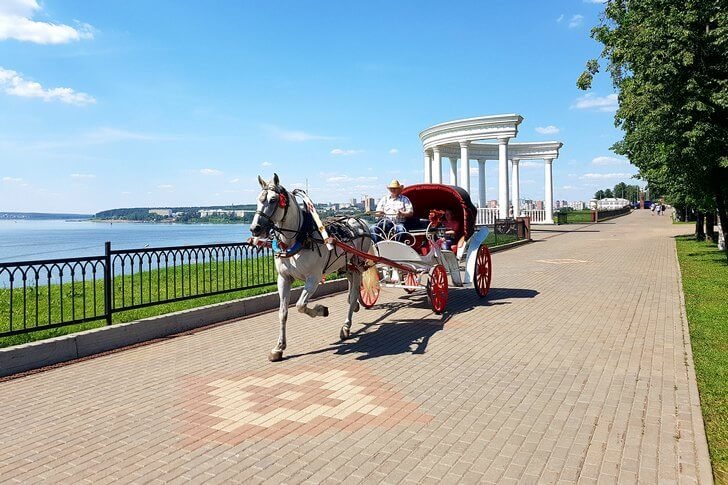Izhevsk is called the Ural Petersburg and the arms capital of Russia. The city was founded as a factory settlement at an industrial enterprise; today it is included in the list of the largest settlements in the country. For quite a long time, Izhevsk was perceived as an uninteresting place, where, apart from factory buildings and gray residential areas, there is nothing else to see. However, the city boasts not only the production of weapons of excellent quality - there are interesting places, monuments, museums and theaters.
In the 2000s, the city began to change: squares and streets were reconstructed, new cultural facilities were built, parks were refurbished, and public areas were landscaped. Today, guests of Izhevsk can appreciate all the efforts of the city authorities, walking along the well-groomed streets and squares.
What to see and where to go in Izhevsk?
The most interesting and beautiful places for walking. Photos and a short description.
- St. Michael's Cathedral
- Embankment of the architect Dudin
- Central square
- Karlut Square
- Monument Friendship of Peoples
- The main building of the weapons factory
- General's house
- Water tower
- Cathedral of Alexander Nevsky
- Opera and Ballet Theater of the Udmurt Republic
- Russian Drama Theater of Udmurtia
- National Theater of the Udmurt Republic
- Museum named after M. T. Kalashnikov
- Izhevsk Moto Museum of the Kozhushkovs
- Kuzebay Gerd Museum
- Museum of the plant Izhmash
- Art Museum
- Monument to A.F. Deryabin
- Monument to Izhevsk gunsmiths
- Monument to the crocodile
- Izhik
- State Circus of Udmurtia
- Izhevsk zoo
- Museum-Reserve Ludorvai
- Park of Culture named after S. M. Kirov
- Gorky Summer Garden
St. Michael's Cathedral
The history of St. Michael's Cathedral is similar to the fate of many churches that did not survive the persecution of religion during the Soviet era. The building was built in 1907. After the Revolution, the authorities adapted it as a museum of local lore, but in 1937 it was nevertheless demolished. The ruins of the once majestic cathedral “decorated” Izhevsk until the early 2000s. In 2007, by decision of the city administration, the temple was rebuilt, it was consecrated by Patriarch Alexy II.
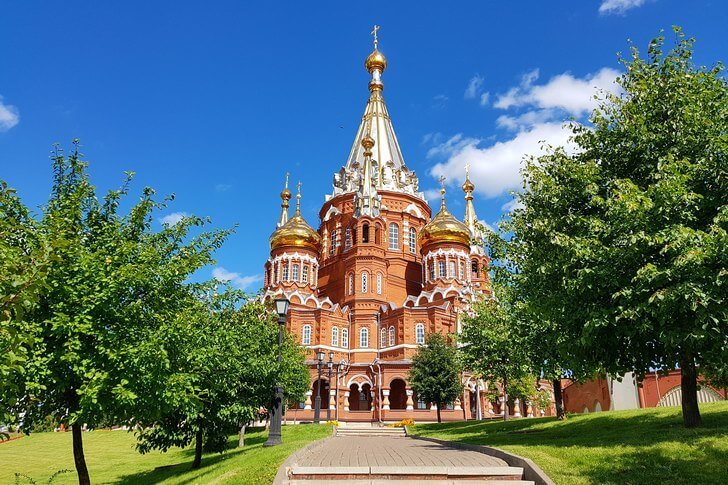
Embankment of the architect Dudin
The banks of the Izhevsk pond took shape in the 18th century, but the equipped embankment appeared only in the 1970s and 80s. After completion of works on the improvement of the site and the opening, it was named after the first architect of Izhevsk, S. E. Dudin. Most of the promenade is located in the central part of the city. In 2010, the embankment was reconstructed, after which it became one of the most popular places among the citizens.

central square
The central square of Izhevsk took shape in the second half of the 20th century. It is surrounded by administrative offices, in the middle there is a cascade of fountains of a rather impressive size, which has lighting and musical accompaniment. The dimensions of the square make it possible to organize concerts, large-scale public events, political actions, and parades here.
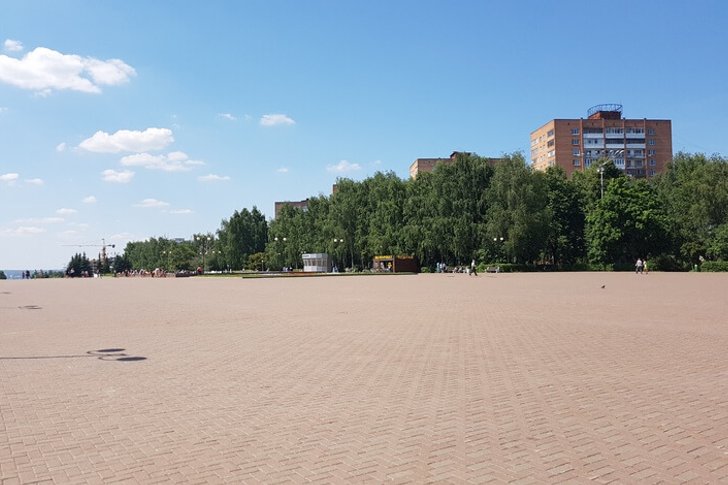
Karlut Square
The square is located in the historical center of the city. Previously, it was called Artilleriyskaya in honor of the weapons production and arsenal located here. Active development of the area began in Soviet times from the 1920s. Over the course of several years, monuments were erected, alleys paved and lawns laid out. In 1967, the square was decorated with the Monument of Military and Labor Glory, depicting a determined warrior with a banner in his hands.
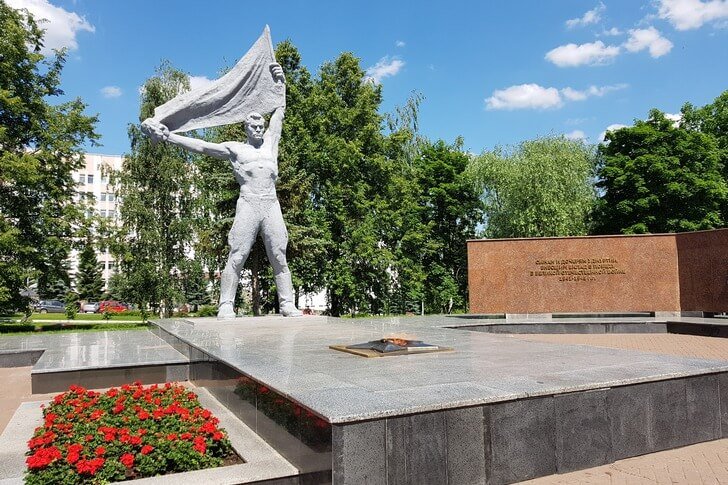
Monument "Friendship of Peoples"
The monument was erected in 1972 in honor of the 400th anniversary of the entry of Udmurtia into Russia. It is a 46-meter stele in two parts, lined with stainless steel. Reliefs depicting the working life of workers and peasants are applied to metal plates. In 2008, the monument was reconstructed and evening illumination was added, while the surrounding space was ennobled.

The main building of the weapons factory
Ensemble of buildings of industrial architecture, built in the first half of the XIX century. The Izhevsk Arms Plant was founded by order of Alexander I. Its construction was carried out under the supervision of engineer A.F. Deryabin. The main entrance is decorated with a series of columns, the roof ends with a high spire crowning a round tower. At the moment, the building is in an unsatisfactory condition, despite the fact that it is an object of cultural heritage.
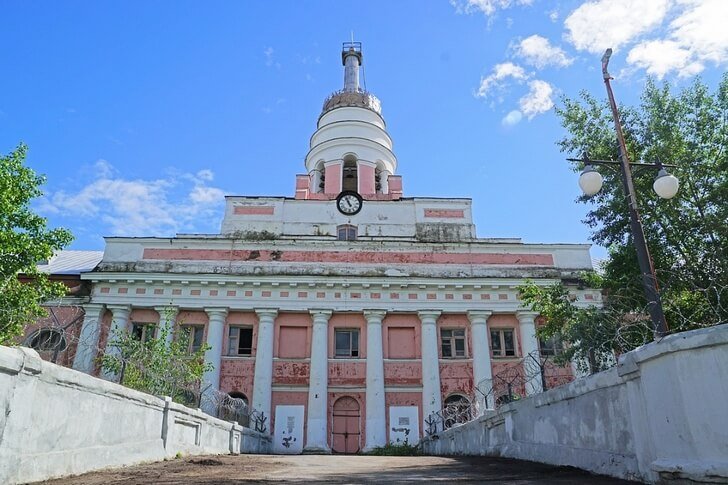
General's house
City estate of the 19th century, built with elements of the Empire style. It was erected for the temporary residence of the leaders of the arms factory, who had the rank of general, so the building was nicknamed the "General's House". Today, the mansion houses the Museum of Izhevsk, where, in addition to the exposition dedicated to the history of the city, you can attend interesting thematic lectures.
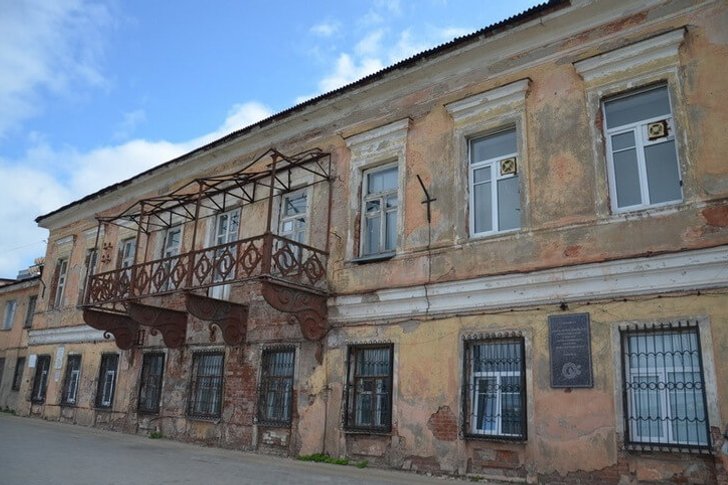
Water tower
The industrial building of the beginning of the 20th century is the oldest hydraulic structure in the city. The tower was built of red brick, in its appearance you can see elements of the Gothic style, which is not at all typical for this kind of buildings. For several decades, rock climbing training took place here, but by 2008 the structure fell into disrepair, and it became dangerous to climb it.
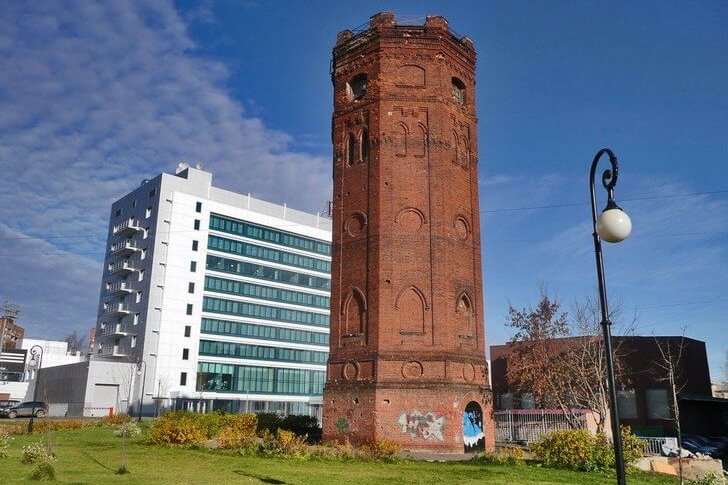
Cathedral of Alexander Nevsky
The cathedral is a monument of church architecture. It was erected in the first half of the 19th century in the classical style, designed by A. D. Zakharov and S. E. Dudin. After being looted and closed in the 1930s, a cinema was opened in the building. In 1990, it was handed over to the Russian Orthodox Church and restored. Today, the cathedral is an outstanding example of strict Russian classicism, distinguished by the solemnity of its forms.

Opera and Ballet Theater of the Udmurt Republic
The opera stage of Udmurtia is a young institution, it was founded in 1993. Previously, musical performances were held at the sites of drama theaters. The opera house was erected in 1984. It is a building in the styles of Soviet constructivism and monumentalism, made in strict geometric forms. The roof is crowned with sculptures - musical instruments.

Russian Drama Theater of Udmurtia
The debut of the theater took place in 1935. The audience enthusiastically greeted the first production of "Aristocrats", which received a long standing ovation. The historic building, along with all the props, burned down in 1941. After the end of the Second World War, the stage moved to a new location and practically began to revive from scratch, updating the program and presenting new performances to the audience.
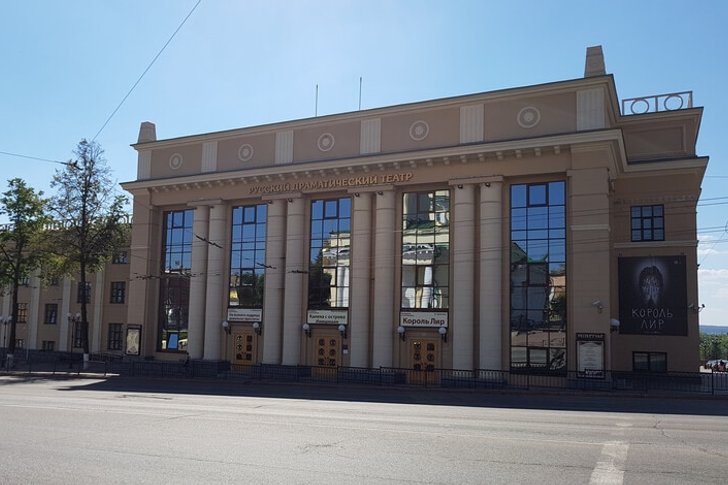
National Theater of the Udmurt Republic
One of the central places in the cultural life of the Udmurt Republic is occupied by the National Theater, founded in the 1930s. As the name implies, the main place in the repertoire is given to the works of national authors, however, classical performances are also often given here (some of them are in Udmurt with simultaneous Russian translation).
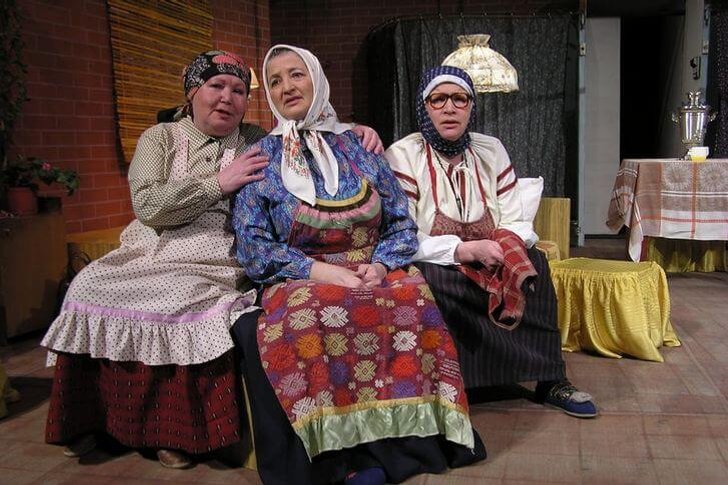
Museum named after M. T. Kalashnikov
The museum complex opened in 2004. This event was timed to coincide with the 85th anniversary of the weapons designer M. T. Kalashnikov. The exposition is dedicated to the history of weapons production in the city and the personality of Kalashnikov himself. The halls display various types of weapons - both historical and modern. The museum has a shooting gallery where everyone can try out the samples in action.
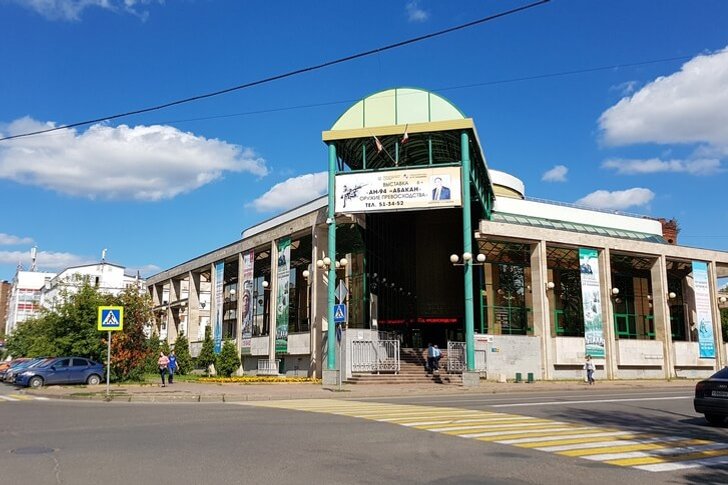
Izhevsk Moto Museum of the Kozhushkovs
Museum of motorcycles and motor vehicles. Based on the private collection of Artem and Pavel Kozhushkov, which contains unique samples of motorcycles produced by the Izhevsk Motor Plant, for example, the Izh-49 running gear in original configuration. The exposition is divided into four thematic sections: "For the front and rear", "People's motorcycles", "Sport", "Not only motorcycles".
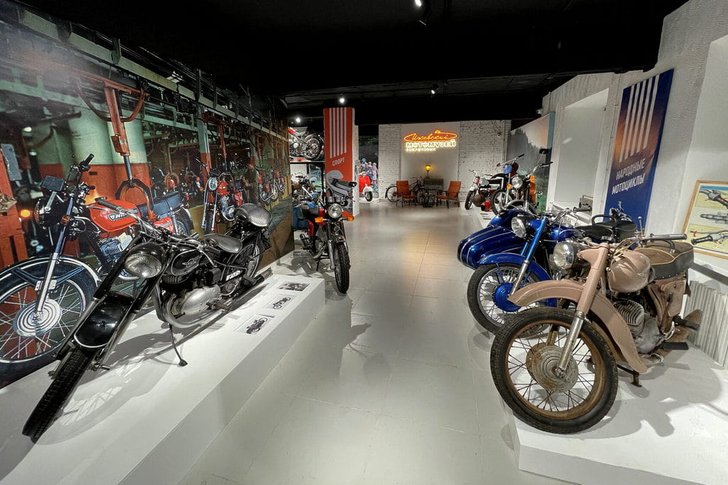
Kuzebay Gerd Museum
Since the 1970s, the exposition has been located in the arsenal building. It is dedicated to the history of Udmurtia and the culture of its peoples. Among the permanent exhibitions, one can single out "History of the Region", "Fair", "Udmurts", "Industry and Cities". The museum funds contain more than 200 thousand exhibits that form archaeological, natural, ethnographic, numismatic and art collections.
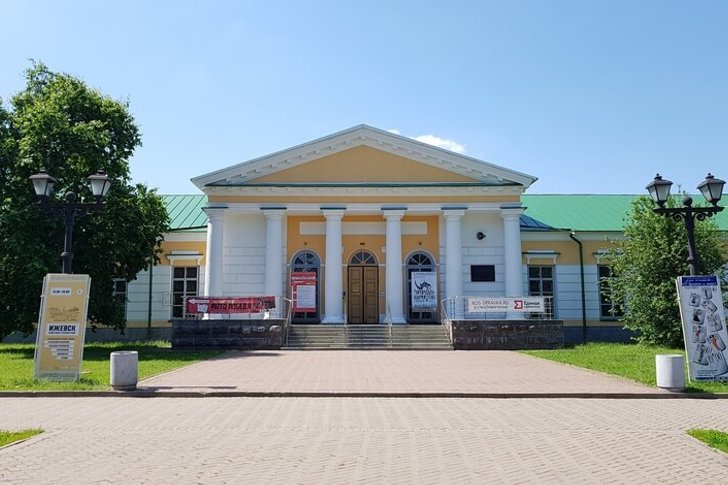
Museum of the plant "Izhmash"
It is believed that the museum was founded in the first half (according to other sources - in the middle) of the 19th century. In 1887, the exposition moved to the building of the main building of the arms factory. During the Civil War, the collection was looted. It took more than 30 years to restore it. Since 1975, it has been located in the building of the cash pantry - the oldest stone building in Izhevsk, built in the 1810s.
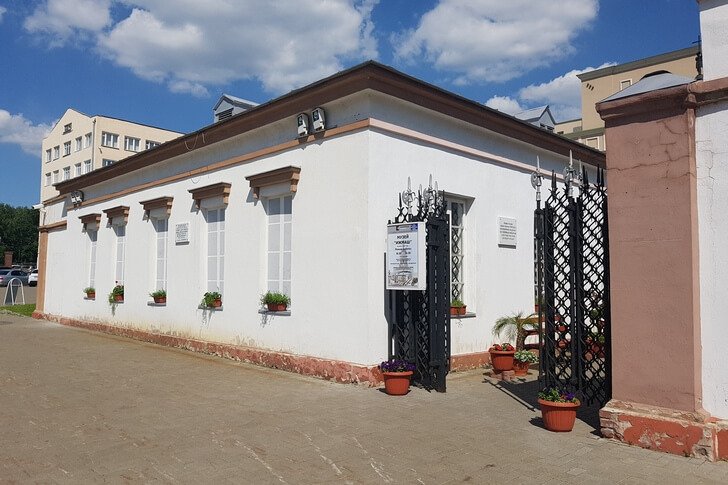
Art Museum
The museum opened its doors to visitors in 1980. Its collection is a collection of paintings by Russian and Udmurt artists, as well as decorative and applied expositions, products of folk craftsmen, icons, sculptures and graphic drawings. In addition to permanent exhibitions, guests can visit temporary ones. The museum has a scientific library and restoration workshops.

Monument to A.F. Deryabin
A.F. Deryabin is the founder of the Izhevsk arms factory. Thanks to him, this industry received a powerful impetus. A monument in honor of this outstanding figure and engineer was erected in 1907 opposite the entrance to the main building of the enterprise. The sculpture is a bronze bust of Deryabin on a high stone pedestal with a commemorative plaque.
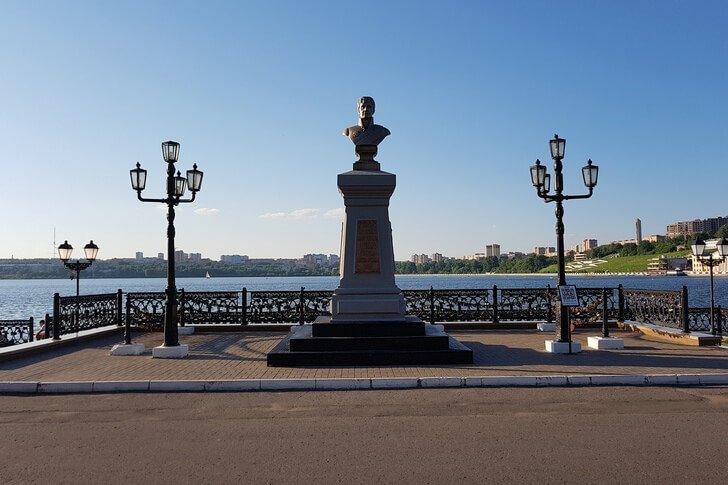
Monument to Izhevsk gunsmiths
The sculptural group was installed in 2007 next to the Izhevsk pond in front of the Museum of the Izhmash plant. The composition consists of the figures of two respectable men dressed in caftans and top hats - caftans (in tsarist times, these people were considered the best gunsmiths). The real masters of the plant acted as prototypes, whose images were created using old photographs.
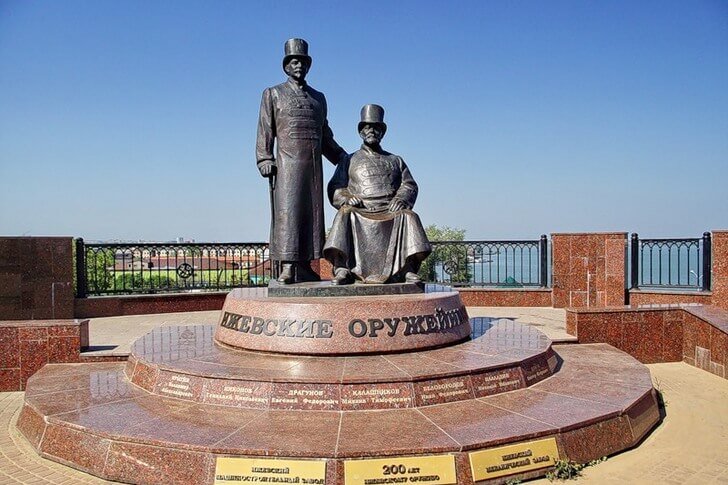
Monument to the crocodile
Modern sculpture of 2005, representing a crocodile in full dress: in a tailcoat, top hat and bow tie. Cast-iron reptile imposingly settled down on a bench, crossing his legs and throwing back a contented muzzle. The monument is made in the postmodern style. It was conceived as a future symbol of the city, designed to humanize the faceless, according to many, image of Izhevsk.
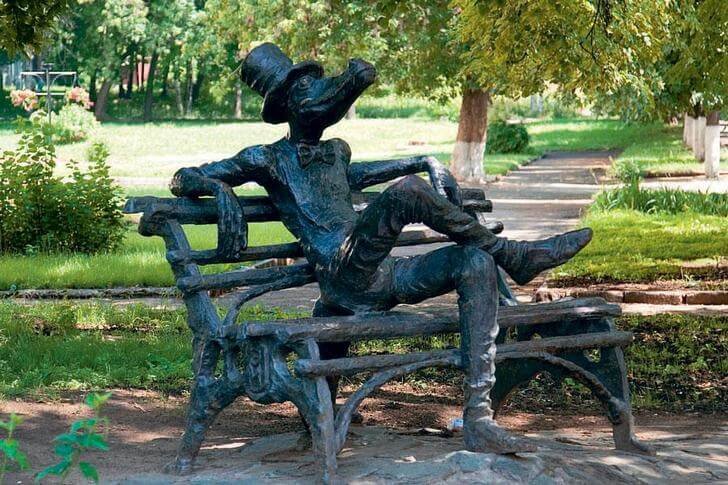
izhik
Little Izhik is a talisman and a symbol of the city. It represents a boy dressed in a caftan of city gunsmiths. The idea of creating a sculpture belonged to the children's association "Youth". To create a figure, a collection of iron keys was organized throughout the city. In a short time, residents brought 180 kg. material, after which Izhik was cast in the steel shop of Izhstal OJSC.

State Circus of Udmurtia
The circus is located in a modern building built in 2003, designed by a Moscow architect. In addition to the original appearance, it is distinguished by good technical equipment, which allows organizing spectacular performances. The auditorium is designed for 1800 people. Recognized stars of Russian circus art often perform on the arena.

Izhevsk zoo
Izhevsk Zoo is a young institution founded in 2008 on the initiative of the head of the republic. It was built taking into account the fact that animals should live in close to natural conditions - in spacious enclosures, and not in closed cages. The zoo is home to tigers, walruses, bears, wolves, monkeys, rare birds and fur-bearing animals. The collection of animals is constantly updated.
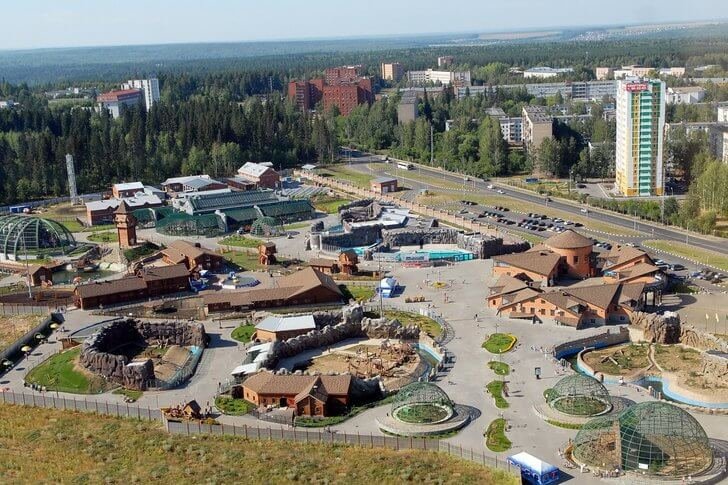
Museum-Reserve "Ludorvai"
An architectural and ethnographic complex located on the territory of the village of the same name. It consists of 21 buildings, which include two estates, village houses and utility rooms. On the territory of the museum-reserve you can get acquainted with the culture of the Udmurt people, try national cuisine or take part in a folklore event.
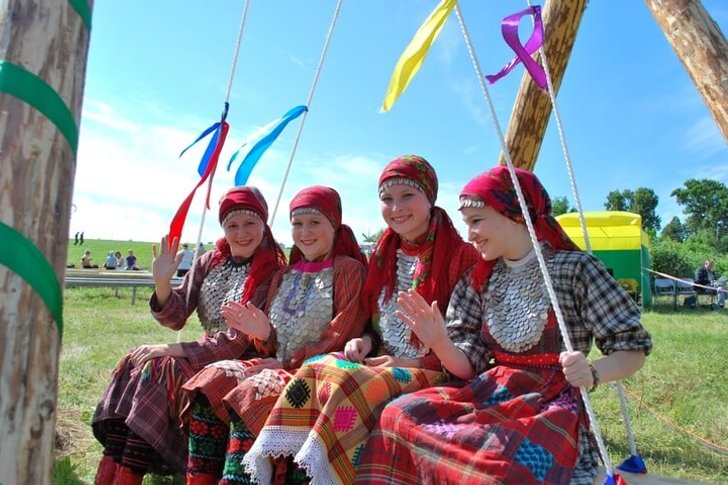
Park of Culture named after S. M. Kirov
A public park organized in the 1930s by the workers of Izhevsk factories. Throughout the Soviet and post-Soviet periods, it continued to develop as a recreational area. In 2008, a zoo was opened on its territory. Residents like to walk along the alleys, ride bicycles along special paths, organize ski races or go to the skating rink in winter.
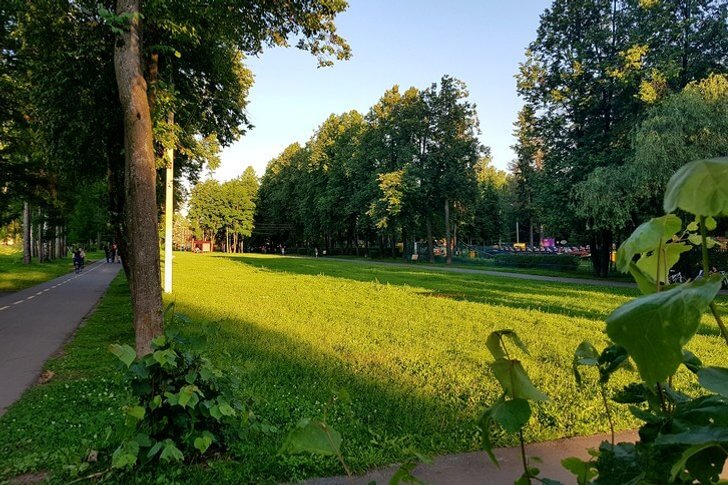
Gorky Summer Garden
The garden is located on the banks of the Izhevsk pond. Its history began in the middle of the 19th century. Until 1917, only residents and guests of the General's House could walk here, after the Revolution everyone was allowed to come here. The first attraction appeared in the park in the 1940s (it was a wooden swing). There is a monument to M. Gorky and a classical rotunda in the garden.
